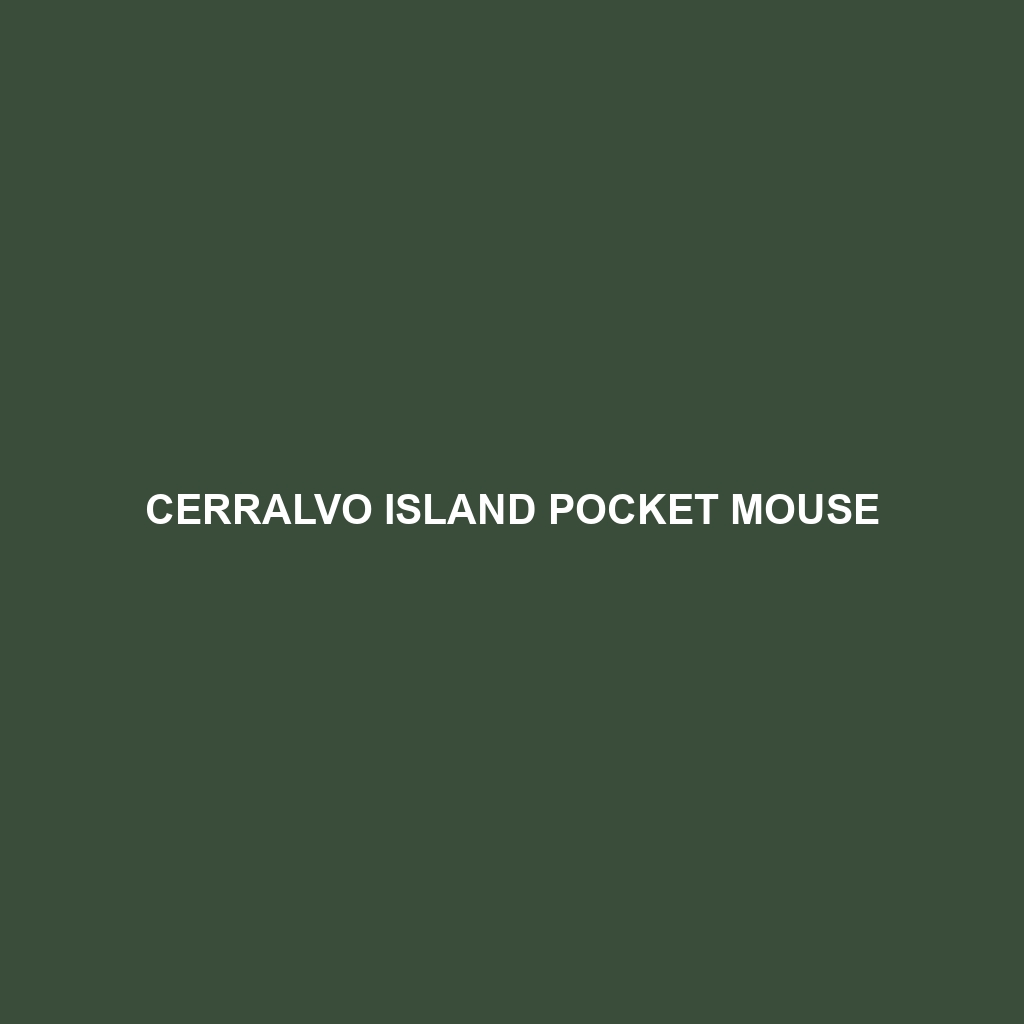Cerralvo Island Pocket Mouse
Common Name: Cerralvo Island Pocket Mouse
Scientific Name: Chaetodipus insulatus
Habitat
The Cerralvo Island Pocket Mouse is primarily found on Cerralvo Island, located in the Gulf of California, Mexico. This species thrives in arid to semi-arid environments, often inhabiting scrublands and desert regions. The unique geography of the island, characterized by rocky terrains and sparse vegetation, provides an ideal habitat for these small mammals.
Physical Characteristics
The Cerralvo Island Pocket Mouse typically measures around 8 to 10 inches in total length, with a body length of approximately 3 to 4 inches. Its fur is a soft, sandy color, which serves as camouflage against the desert landscape. The mouse possesses large, round ears, and a long, tufted tail that aids in balance during its rapid movements. Notable distinctive features include its cheek pouches, used for storing food, making it easily recognizable among other pocket mouse species.
Behavior
This species is primarily nocturnal, displaying active behaviors during the cooler evening hours. The Cerralvo Island Pocket Mouse is known for its agility and ability to leap considerable distances, which assists in evading predators. It also exhibits solitary behavior, preferring to establish small territories. Their burrowing habits are vital, allowing them to create shelter from extreme temperatures and predators.
Diet
The diet of the Cerralvo Island Pocket Mouse consists mainly of seeds, fruits, and various plant materials, as well as insects. This herbivorous diet is essential for their survival, especially in the dry conditions of their habitat. The mouse’s ability to locate and store food resources significantly contributes to its ecological role, allowing it to thrive in resource-scarce environments.
Reproduction
The breeding season for the Cerralvo Island Pocket Mouse typically occurs from spring to early summer. Females can produce up to three litters per year, with each litter consisting of about three to five offspring. The young are born blind and helpless, requiring ample care from their mother until they are capable of independent survival.
Conservation Status
The Cerralvo Island Pocket Mouse is currently listed as vulnerable due to habitat loss and environmental changes impacting its population. Conservation efforts are essential to preserve its natural habitat and maintain the species’ stability.
Interesting Facts
One fascinating aspect of the Cerralvo Island Pocket Mouse is its remarkable adaptation to the harsh desert environment, allowing it to survive with minimal water intake. It can extract moisture from the seeds it consumes, demonstrating an extraordinary evolutionary trait that aids its survival.
Role in Ecosystem
The Cerralvo Island Pocket Mouse plays a crucial role in its ecosystem by acting as a seed disperser, contributing to the growth and propagation of various plant species. Its presence supports the food chain, providing nourishment for predators such as snakes and birds of prey, thereby maintaining ecological balance.
